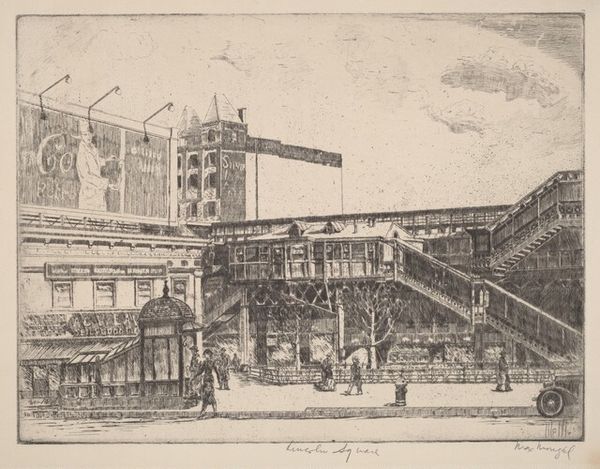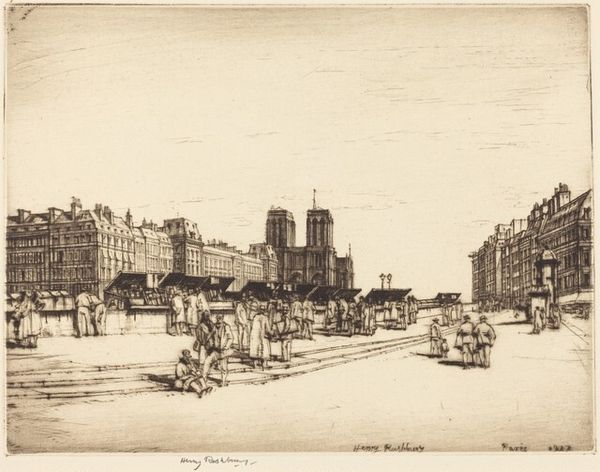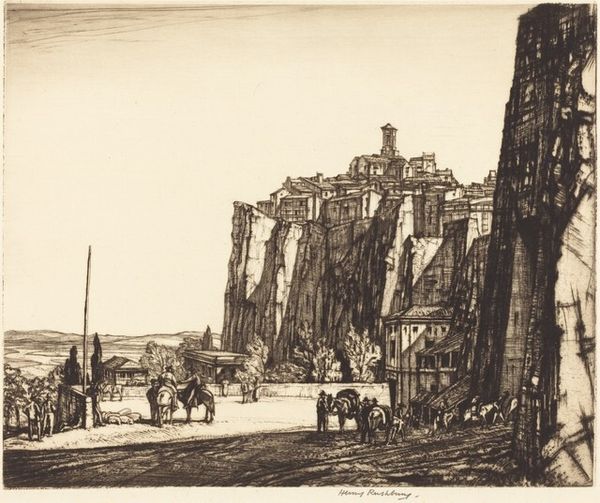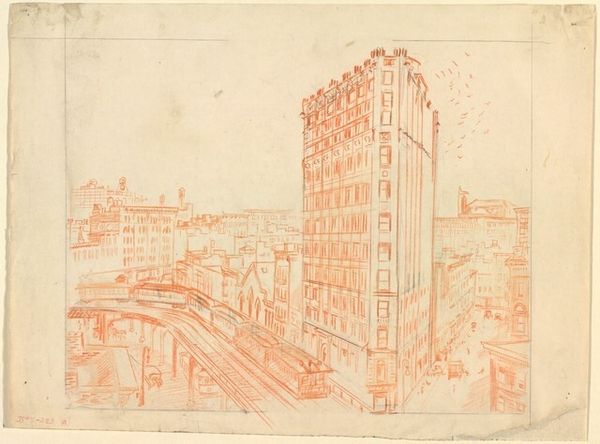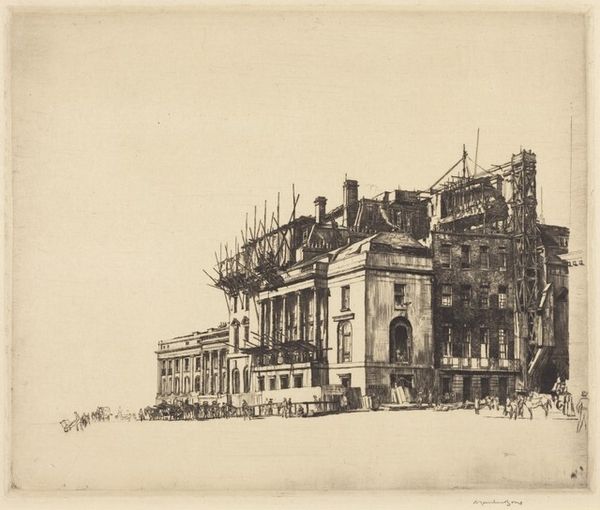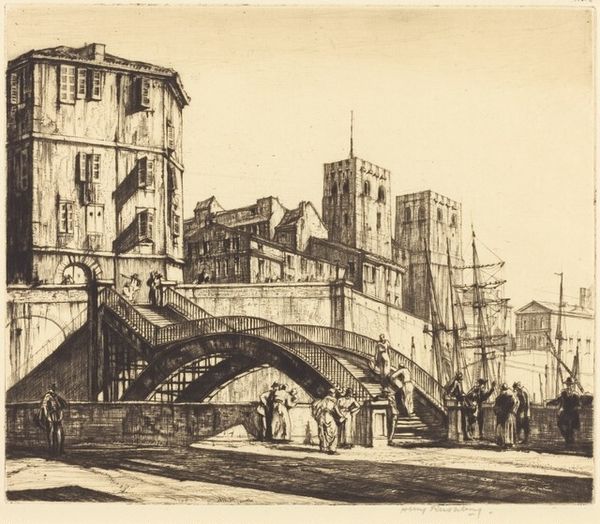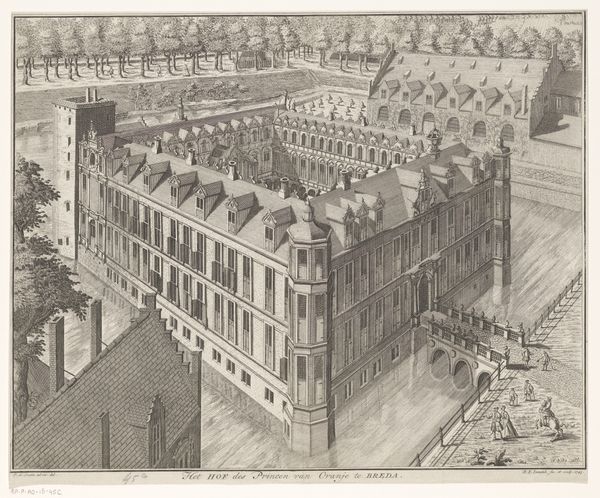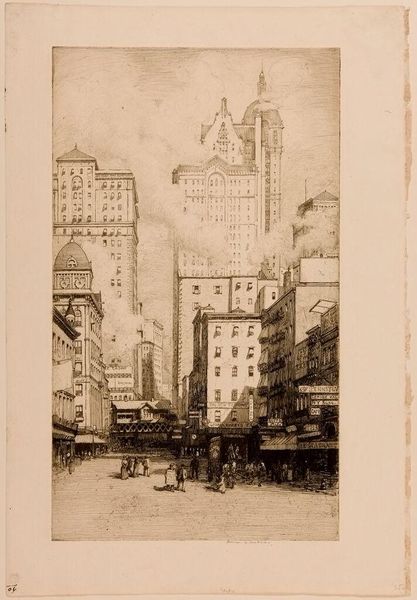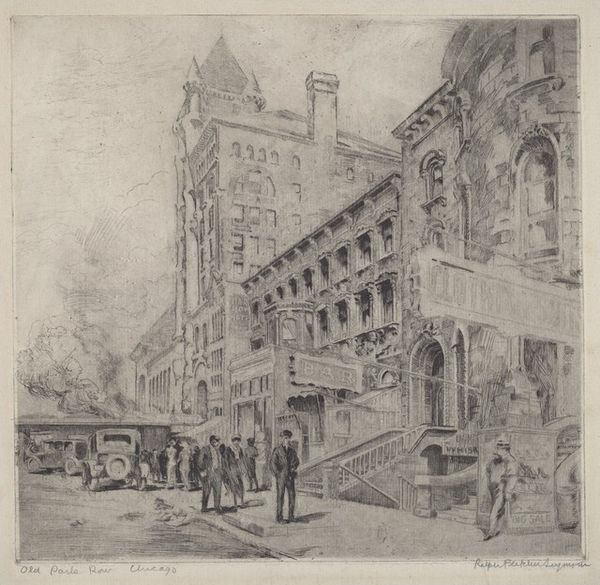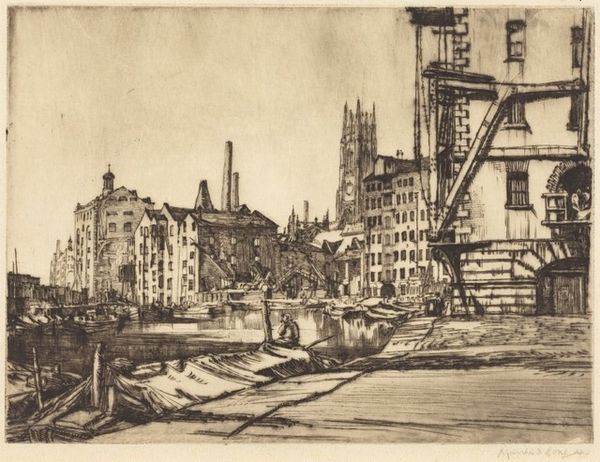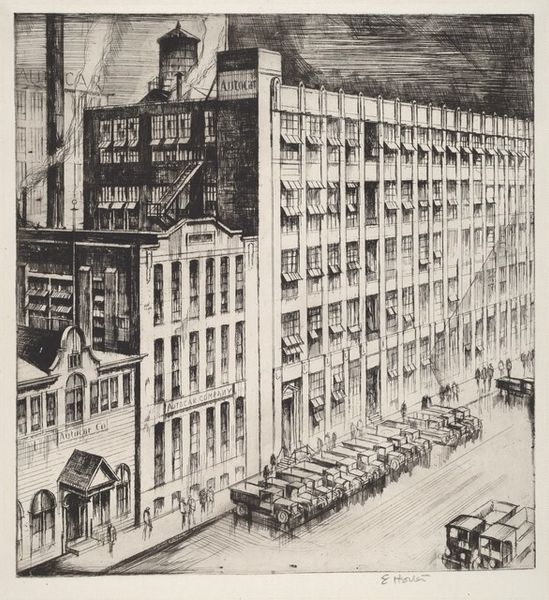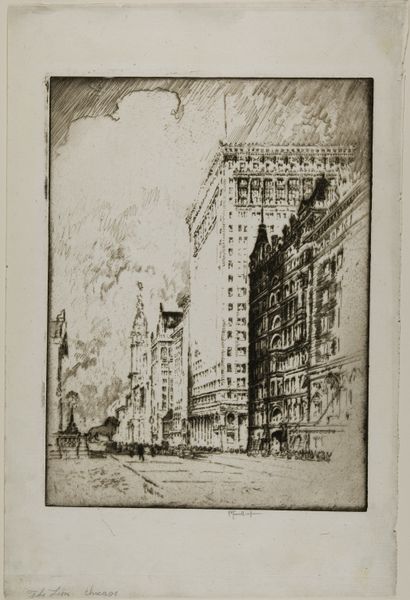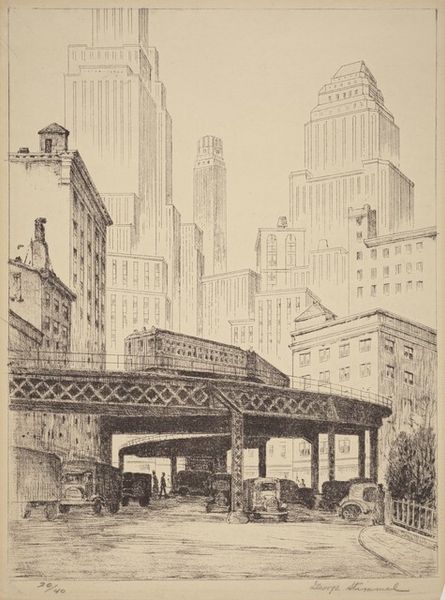
#
pen and ink
#
architectural sketch
#
landscape illustration sketch
#
mechanical pen drawing
# print
#
pen sketch
#
etching
#
linework heavy
#
pen-ink sketch
#
pen work
#
architecture drawing
Dimensions: plate: 21.7 × 39.3 cm (8 9/16 × 15 1/2 in.)
Copyright: National Gallery of Art: CC0 1.0
Editor: This is Henry Rushbury’s print called "Genova". It seems to depict the Italian city, probably from the first half of the 20th century given the style and the fashion of the figures. I am struck by how he uses simple lines to create so much depth and complexity. What can you tell me about it? Curator: Well, thinking about Rushbury’s broader work, it fits within a larger artistic and cultural movement. The print reflects the interest many artists had in documenting the rapidly changing urban landscape. This image becomes more than just a city view; it becomes a social record. What do you notice about how Rushbury portrays the architecture in relation to the people? Editor: There seems to be more details in the architecture than in the figures themselves, and the architecture takes up more space. It gives the buildings a kind of monumental quality, overshadowing the figures a bit. Curator: Exactly. And isn’t it curious how he chooses this specific viewpoint, offering a sweeping panorama but keeping the human figures relatively small and almost anonymous? Think about how that artistic decision might be reflecting the changing social dynamics, where the individual begins to feel dwarfed by the scale of modern urban life. Editor: I see what you mean. Maybe it’s a comment on the individual's place within a modern, industrial society. The architectural details celebrate the rising structures. Curator: And how might institutions like museums and galleries, which started gaining prominence then, have played a role in promoting this perspective? Editor: Maybe showcasing works like these solidified a specific viewpoint about urban progress. Curator: Precisely! This single print opens a window into understanding the era’s priorities, and its reflection on what was deemed important. Editor: It is a bit like reading the visual culture to understand history itself. I am very intrigued. Thank you!
Comments
No comments
Be the first to comment and join the conversation on the ultimate creative platform.
